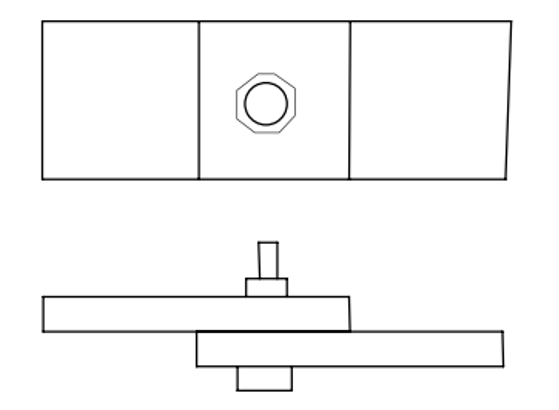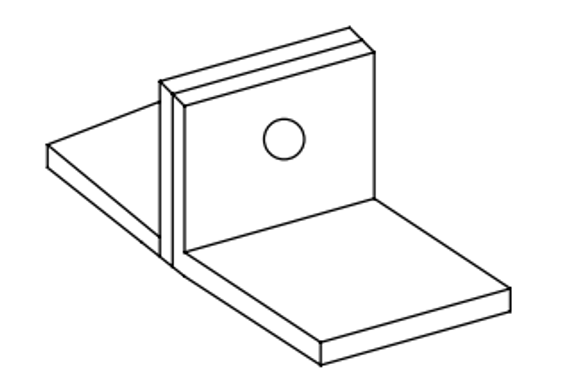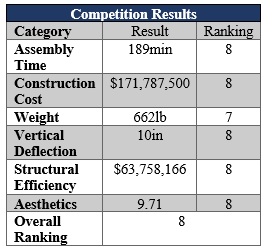The preliminary design required the determination of two different categories, overall bridge and stringer configuration. Upon this determination, the bridge underwent decision for material and connections based on feasible and available materials.
The overall bridge is the super structure of our design. This is how the team decided the overall shape prior to choosing smaller details such as the stringer configuration. The team priority for this decision was the ability to construct the bridge easily due to time constraints for building, the aesthetics as it is one of the major categories of the competition and potential tie-breaker, along with the structural efficiency as the bridge will need to effectively withstand vertical and lateral loads.

| Category | Beam Bridge | Warren Bridge | Arch Bridge |
| Ease of Construction | + | - | |
| Aesthetics | - | + | |
| Structural Efficiency | - | + | |
| Total | - | + |
The stringer configuration was going to be on of the substructures of the bridge. The team analyzed different trusses to help determine a stringer that would best fit criteria including ease of fabrication, aesthetics of the bridge, and the structural capabilities to withstand loads.

The team analyze different connection options that would best fit criteria set by the AISC competition. This include a restriction to faying surfaces and type of connection.


This competition requires the bridge to be completely made of strongly magnetic steel. The team had to determine appropriate steel materials that are both available and meet the specifications for the competition.

The final design was an iterative process requiring the steel bridge team to use RISA to finalize the design and connection requirements. Upon review code checks and deflections, the team also determined connection design requirements to ensure all connections, including welds, can withstand loading.
Part of the iteration was to analyze whether the bridge was able to withstand loading. The bridge was analyzed for tensile and compressive forces. Upon review, all members were able to withstand with the worst demand to capacity ratio at 0.72.
The bridge was also analyzed for vertical and lateral deflection. The team determined for the vertical deflection there would be a stricter tolerance on the deflection to anticipate fabrication errors. Therefore, the team ensured that every location with of deflection of greater than 0.5 inches would not meet the team's specification. The aggregate deflection was what was required for the competition, therefore the team also analyzed the expected aggregate deflection for the bridge at the worst case loading.




The connection design utilized the worst case loading forces within all members to determine the demand for each connection. Using iterations, each critical connection was analyzed for different failure modes for bolted connections. Below shows some of the critical connections that span throughout the bridge and the color coded demand with tension being red and compression as blue. As the bridge is symmetrical, the bridge was analyzed with critical member demand and the capacity of the connections is seen in the table below.


This project required the team to produces shop drawings to begin the fabrication process. Following the 2-D Shop drawings, the team was responsible for cutting and welding of the bridge. Some of the bridge was welded by the local high school to provide an educational opportunity.
The competition help April 11th-12th is when the team tested their bridge in the vertical and lateral load competition. The following were the results of the competition. Despite the outcome, the team had valuable lessons learned to continue onto future capstone teams.

Competition Photos By: Kylie Hanson
This site was created with the Nicepage